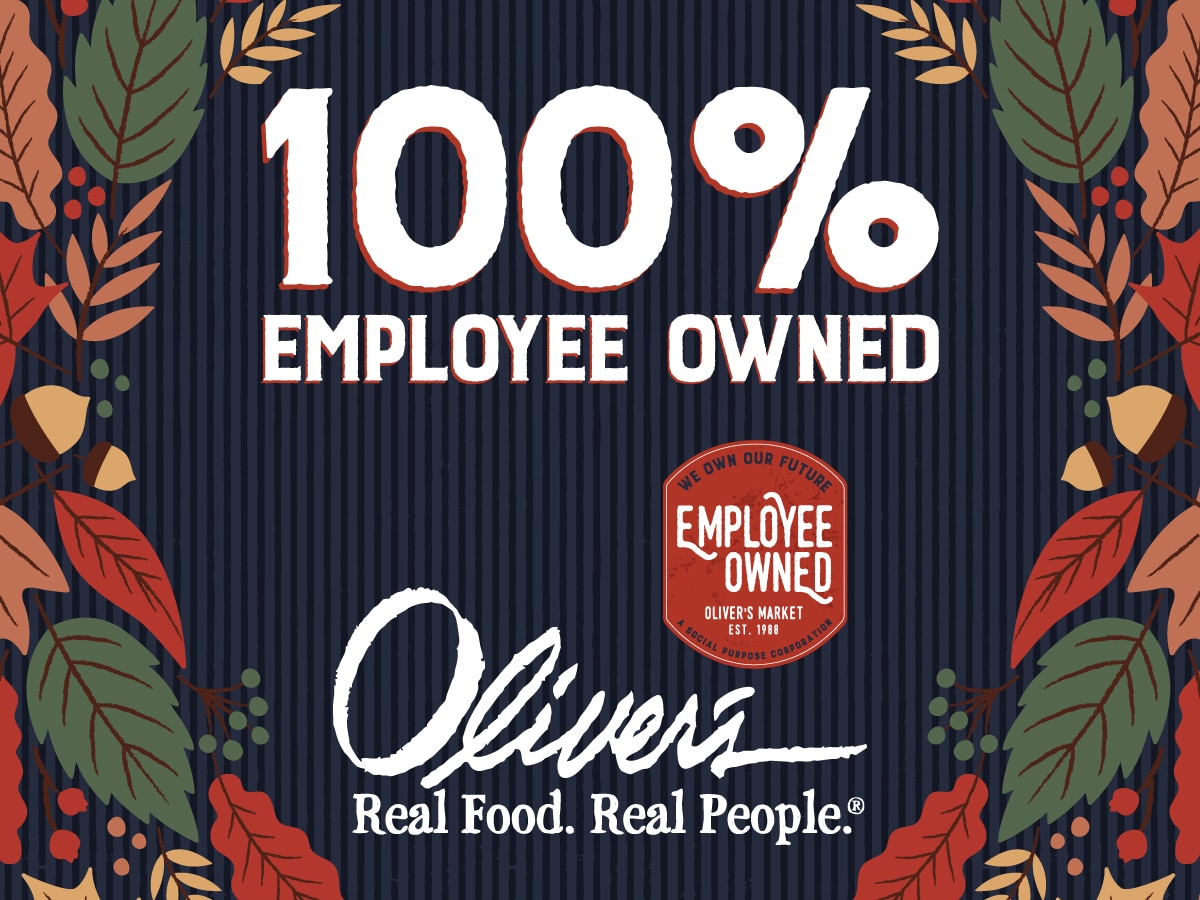The issue of marketability discounts in ESOP transactions is an issue that has been crying out for clarification ever since the Eyler case was decided by the Tax Court in 1995 and affirmed by the Seventh Circuit Court of Appeals in 1996.

The petitioner in the Eyler case was the principal shareholder of Continental Training Services, Inc. (“CTS”), a privately held company whose primary business was operating vocational schools to train truck driver and heavy equipment operators. In early 1986, the petitioner and CTS decided to take the company public through an initial public offering (IPO). The preliminary prospectus that was prepared by the underwriters in September l986 set forth an estimated offering price range of between $13 and $16 per share. In the following month, however, the market declined sharply, causing the IPO window to close. As a result, the underwriters were not able to attract sufficient interest in the IPO, and they advised CTS to postpone the IPO.
Instead of postponing the IPO to a later date, CTS formed an ESOP in December 1986, and the petitioner sold $10 million worth of his company stock to the ESOP at $14.50 per share.
In the meantime, the U.S. Department of Education had commenced an audit and investigation of CTS in early 1986, claiming that the company’s training courses did not comply with federal law, and the attorney general of California advised CTS on July 26, 1986, that it had tentatively concluded that the company’s refund policy was unfair and that its marketing information was false and deceptive. In 1988 the U.S. Department of Justice filed a $366 million lawsuit against CTS and also withdrew CTS’s eligibility to participate in various government student loan programs. Shortly thereafter, CTS went out of business.
Subsequently, the Commissioner sued the petitioner for excise taxes on the grounds that the purchase of CTS stock by the ESOP was for more than adequate consideration and was therefore a prohibited transaction.
The Commissioner argued that the $14.50 purchase price was not fair market value for ESOP purposes because the estimated IPO offering price range did not purport to determine the fair market value of CTS as of a specific point in time. In addition, the estimated offering price range was based on certain underlying assumptions were not present at the time of the ESOP transaction.
The Commissioner also argued that even if $14.50 was still the fair market value at the time of the ESOP transaction, the $14.50 failed to take into account a discount for lack of marketability that applies in the case of a closely held corporation whose shares are not publicly traded. As a rebuttal to this argument, the petitioner argued that a marketability discount was inappropriate because of the existence of a put option in the ESOP agreement.
The Tax Court ruled in favor of the Commissioner, primarily on the grounds that the facts and circumstances had changed:
Similarly, in the present case, it was not enough for the fiduciaries to rely on their generalized beliefs that CTS’s prospects were good. The Pru-Bache estimated price range represented an analysis of specific facts and assumption. Prudent fiduciaries would have sought to analyze the effect of obvious changes in those facts and assumptions; namely, the failure of the IPO to materialize and the establishment of an ESOP. There is no evidence that the CTS board considered the impact of these changes on the value of CTS stock. Gary l. Eyler v. Commissioner [Dec. 50,538], T.C Memo 1995-123, at 2213.
The Tax Court also ruled against the petitioner’s argument that the ESOP put option obviated the need for a marketability discount:
While the existence of a put option may preclude the need for a marketability discount, that is not the case here. Eyler, supra at 2209.
Obviously, the ruling of the court was primarily based on the fact that the stock of CTS was not specifically appraised for ESOP purposes, and on the fact that the facts and circumstances had changed as of the date of the ESOP transaction. Thus, it is arguable that the court’s comments regarding the put option argument were mere “dicta,” since these comments were not essential to the court’s ruling.
Nevertheless the court’s language seems to reject the put option argument, and the court’s ruling has served to intimidate ESOP appraisers ever since.
Before the Eyler case, there were two schools of thought regarding the ESOP marketability discount. One school of thought was that there should be no marketability discount in the case of a purchase of company stock from a direct shareholder. The other school of thought was that there should be a small discount, ranging from 5% to 15%. In most cases, the rationale for taking no discount or only a small discount was that the marketability discount is minimized by virtue of the ESOP put option, provided that the company has sufficient liquidity to meet its put option obligations. Some trustees, however, viewed the put option as having no mitigating effect on the marketability discount.
After the Eyler case, virtually all appraisers starting taking a 5%–15% marketability discount, just to be safe. Despite the fact that the Eyler case cast doubt on the argument that the ESOP put option is a valid rationale for a smaller marketability discount, virtually every ESOP appraisal today continues to justify the smaller discount by reference to the existence of the ESOP put option.
Origin and Development of the Put Option Argument
I began looking into the origin and development of the put option argument a few months ago in connection with pending litigation involving an ESOP transaction that occurred some 10 years ago. Quite by accident, I discovered that I myself am probably the source of the confusion that has dogged this issue since ESOPs were first codified in 1974.
In 1976 a couple of years after starting Menke & Associates, Inc., I concluded that the ESOP industry would never be able to grow and develop if only a handful of lawyers knew how to design, structure and install ESOPs. Accordingly I wrote a comprehensive ESOP reference book, complete with sample plan documents, checklists and other reference materials, entitled How to Analyze, Design and Install an Employee Stock Ownership Plan. Panel Publishers published the book in 1976 and marketed it to lawyers, CPAs, appraisers, and other such service providers. The book came in a three-ring binder and, like other reference books published by Panel Publishers, was supplemented with quarterly updates.
To the best of my knowledge, this was the only reference book regarding ESOPs that existed at that time and for several years thereafter. Even the IRS used it as a training manual for their IRS reviewers.
My book covered all aspects of ESOPs, including ESOP uses, tax aspects, accounting aspects, labor law aspects, securities law aspects, and valuation aspects. The valuation chapter, however, was somewhat succinct, consisting of only six pages.
The first paragraph of the valuation chapter noted that there are four different situations where an appraisal is needed in connection with an ESOP:
Valuation of the company stock is of critical importance to the ESOP, since valuation is involved in each of the following situations: when company stock is contributed to the trust, when company stock is purchased by the trust, each year as the company stock is held by the trust, and each year as company stock is distributed from the trust. John D. Menke. How to Analyze, Design, and Install an Employee Stock Ownership Plan. Greenvale, N.Y.: Panel Publishers, l976, at 3051.
After discussing the various valuation approaches, I then made the following comments under the heading of “Valuation Discounts”:
Once the valuation of the company is determined, it is still necessary to determine whether the value of the stock should be discounted if it is stock of a closely-held business, if it represents a minority interest, or if it is unregistered stock.
For estate and gift tax purposes, it is customary to allow a discount from full market value in the case of a closely-held company on the basis that the shares are not readily marketable. In the case of a ESOP valuation, if the ESOP is intended to provide an in-house market for the employees, each employee will be specifically granted a “put” option allowing him to “put” the shares distributed to him to the trust and/or the company. In such instances, the ESOT valuation should not provide a discount for lack of marketability. Menke, supra at 3055.
So, there it is. There is the source of the ambiguity and the confusion that has pervaded this issue ever since. Actually, I did not say anything as to whether or not there should be a marketability discount at the time of the purchase of company stock from a direct shareholder. Since it was my clear understanding at that time that a marketability discount was not warranted in the case of an initial purchase of company stock from an outside shareholder, I did not feel that it was necessary to even discuss this issue. Rather, the paragraph quoted above assumed that the ESOP had already acquired stock from an outside seller or from the company. Accordingly, this paragraph states that an ESOP is also intended to provide an in-house market for the “employees,” that each employee will be given a put option with respect to the shares distributed to him, and that “in such instance” there should be no discount for lack of marketability.
Nevertheless, the opening paragraph of this chapter, as noted above, referenced four different situations where an appraisal would be needed in connection with an ESOP. Given this fact, it is fully understandable that the reader might assume that any discussion of valuation discounts would apply to all four situations, unless otherwise specified.
Shannon Pratt’s first valuation book, Valuing a Business: The Analysis and Appraisal of Closely Held Companies, in 1981, perpetuates the same ambiguous language that I promulgated in 1976. Chapter 20 of Pratt’s book is entitled “Employee Stock Ownership Plan.” On page 341, under the heading of “Marketability Discount,” Pratt states:
Another controversy in ESOP share valuation is whether, or the extent to which, there should be some discount applied for lack of marketability.
In a previous chapter we saw that it frequently was reasonable to discount a minority interest in a closely-held company with no market for its stock 35 percent or more, compared to an otherwise comparable but freely tradable minority interest in a publicly-held company. Some would take the position that an ESOP share should not be subject to a marketability discount because the ESOP creates its own market. I think that the question has to be analyzed individually for each ESOP situation, and that the answer lies in how good the ESOP market is. Most of the answer will be found by analyzing the wording of the “put” feature of the ESOP agreement. The more favorable it is to the stockholder, the less the appropriate marketability discount, compared to the price that would be appropriate if the stock were publicly traded. Other factors to consider are the company’s financial strength and its past performance in ESOP stock redemptions.
Some companies have a policy of redeeming ESOP shares for cash when tendered, and have established a track record of doing so, even though the ESOP document allows an extended redemption period at the directors’ discretion. In such cases, where management indicates an intention to continue such a policy, and where the company’s financial position appears capable of supporting it, it would seem that a zero marketability discount would be justifiable. Shannon Pratt, Valuing a Business: The Analysis and Appraisal of Closely Held Companies. Homewood, IL.: Dow Jones-Irwin, 1981, at 341.
As was the case in my book, Pratt did not say anything as to whether or not there should be a marketability discount at the time of the original purchase of stock by the ESOP. Rather, Pratt’s entire discussion refers to the “ESOP share valuation,” to “ESOP shares” and to whether the company has a policy of redeeming “ESOP shares.” Technically, Pratt is 100% correct in his comments regarding the link between the size of the discount and the terms and conditions of the put option. Nevertheless, most readers of his book undoubtedly misread and/or mistook his comments as applying to all of the various situations where the ESOP either purchases stock from preexisting shareholders, receives contributions of newly issued stock, or repurchases stock from terminated participants.
The bibliography at the end of chapter 20 of Pratt’s book cites my 1976 book, Frisch’s 1975 book, and a book written by Joseph E. Bachelder III that was published by the Practising Law Institute in 1979. As in the case of Frisch’s book, however, Bachelder’s book contains no discussion of valuation issues.
The bibliography also cites several journal articles, including a two-part article on “Valuing Closely-Held Stock for ESOP Purposes” written in 1975 by M. Mark Lee, then a vice president at Standard Research Consultants, and published in the Pension and Profit Sharing Tax Journal. As it so happens, this article was included in the appendix to my 1976 book. In reviewing Lee’s article, it is apparent that Pratt was not influenced by Lee’s thinking. For example, in part I of his article, Lee concludes that the put option should always be issued to the company and never to the ESOP, and in part II, Lee concludes that the discount in the initial transaction could range from 10% to 54%.
The above-cited language from the first edition of Pratt has been repeated in each of his subsequent three editions. Further, this same language was perpetuated in the Department of Labor’s proposed “adequate consideration” regulations that were published in the Federal Register on May 16, 1988.
Section 2510.3-18(4)(ii)(H) of the Department of Labor’s (DOL’s) proposed adequate consideration regulations state:
(H) The marketability, or lack thereof, of the securities. Where the plan is the purchaser of securities that are subject to “put” rights and such rights are taken into account in reducing the discount for lack of marketability, such assessment shall include consideration of the extent to which such rights are enforceable, as well as the company’s ability to meet its obligations with respect to the “put” rights (taking into account the company’s financial strengths and liquidity);
Again, the DOL statement is technically correct. The language refers only to the purchase of securities “that are subject to ‘put’ rights.” Since put rights only apply to shares that are already held by an ESOP, the DOL provision technically only applies to stock that is repurchased from plan participants. There is no discussion whatsoever regarding a marketability discount, if any, applicable to the original purchases of stock by an ESOP from outside shareholders. Again, most valuation practitioners have misread this proposed regulation as applying both to original purchases of stock by an ESOP from outside shareholders and to repurchases of ESOP shares from terminated plan participants.
The ESOP Put Option Argument is Fallacious
The only case that has considered whether an ESOP put option serves to mitigate the marketability discount in connection with a purchase of stock by an ESOP from an outside shareholder is the Eyler case described above. In that case, based upon the court’s brief discussion of this issue, it is apparent that the judge for the Seventh Circuit U.S. Court of Appeals knew there was something fishy about the put option argument. Thus, he began by noting that the ESOP put option did not meet the definition of a true put option. Then he also observed that since this was an initial purchase, the company had no history of paying ESOP distributions, and thus could not argue that the put option would serve to reduce the marketability discount. However, the judge stopped short of saying that the put option argument was invalid. Rather, he took the easy way out by citing Pratt’s statement on page 342 of his first edition that “For purposes of determining a marketability discount, the terms of the put option must be examined to determine how favorable they are.” The judge next found that the put option could not be exercised until some future date and that the payout period could be extended by up to five years. Based on these findings, the judge concluded that the “so called” put option did not serve to eliminate the propriety of a marketability discount in this particular case.
Shortly after that decision was rendered, Andrew S. Kubersky, who is an ASA appraiser in California, wrote an article in the fall 1998 issue of this journal titled “Marketability Discounts and ESOP Acquisitions of Minority Share Interests.” The first heading in Kubersky’s article asserted that, “The ‘Put Option’ is Fallacious.” In making his case, Kubersky first argued that the put option is not an attribute of the shares but rather an attribute of the ESOP itself. Second, he argued that the seller of stock to the ESOP typically has no put on his or her shares, and that the ESOP should not be forced to pay for the put as though it were an asset of the seller when, in fact, it is an attribute of the ESOP. He also noted that the DOL misunderstood the definition of fair market value when it issued its proposed adequate consideration regulations in 1988. Third, he argued that the ESOP’s eventual put option does not apply to the block of stock as a whole but only to shares that are distributed to terminated participants.
Having achieved these remarkable insights, however, Kubersky then proceeded to leap to two mistaken conclusions. First, he concluded, without any real discussion (other than a mention of the fact that a determination of fair market value presupposes a hypothetical buyer and a hypothetical seller), that the normal marketability discount of 25% to 40% should apply to the seller. Second, he concluded that it was not appropriate for the appraiser to take the put option into account in valuing the block of stock held by the ESOP. Presumably, the appraiser should value the ESOP shares with a full discount for lack of marketability for purposes of reporting the participants’ account balances on their annual ESOP benefit statements. Under Kubersky’s approach, this discount would then be subsequently mitigated by the put option at such time as the shares are subsequently distributed to the participants. In this regard, Kubersky never suggests a possible solution to this awkward situation, other than to say that appraisers need to determine and include a marketability discount that takes into account “the full definition of fair market value including the assumption of a hypothetical investor before the opinion should be relied upon by the fiduciaries of the ESOP.”
Obviously, the simple solution to this conundrum is to recognize that the hypothetical seller we are talking about is the employee who is the beneficial owner of the stock, and who will have the benefit of the put option provision at such time as he or she may subsequently receive a distribution of his or her shares.
Based on the premise that the put option argument is fallacious, Kubersky’s article implies that all initial ESOP appraisals that have used this argument are erroneous. My view of this matter is that Kubersky’s premise is correct, but his conclusion is mistaken. I would argue that ESOP appraisers have been right all along, albeit for the wrong reasons.
Clearly, many ESOP appraisers have been using an erroneous theory in support of their conclusion that there should be little or no marketability discount assessed in connection with acquisitions of stock from outside shareholders. However, it does not follow that the practice of applying a zero or small marketability discount in such cases is erroneous.
The Marketability Discount in Initial ESOP Purchase Transactions Should Be Zero
The real question still remains, is a marketability discount in fact required in the case of acquisitions of company stock from outside shareholders?
In my opinion, the answer is a clear no. In estate and gift tax cases, divorce cases, and cases involving transfers of stock to key employees, it is clear that a marketability discount should be assessed where there is no pending sale, merger, or IPO transaction as of the date of the valuation.
Conversely, where there is an imminent sale or IPO transaction that is likely to occur within 60 to 90 days from the date of the appraisal, it is normal and customary to apply a zero marketability discount.
When one considers the facts and circumstances of different situations, it becomes clear that the principal factors in determining the size of a marketability discount are (1) the estimated time that it will take to sell or otherwise liquefy the investment and (2) the probability or certainty that the sale or liquidity event will occur. In fact, the size of the marketability discount is directly proportional to the estimated time that it will take to sell or otherwise liquefy the particular investment and the degree of probability that the sale or liquidity event will occur.
Thus, for example, in the case of the 5,000 or so privately held companies that are bought and sold every year in this country, there is never a marketability discount that is factored into these transactions. Immediately before the sale, there is a high degree of probability that the sale will occur and that the seller will have immediate liquidity for his stock. The subject of a marketability discount (unlike the subject of a minority discount) is never even discussed, much less negotiated. The fact that the stock being sold was previously non-marketable has no bearing on the valuation of the stock that is now about to be made liquid.
As the general partner of a private equity buyout firm for over 10 years, and as someone who has been involved in buying and selling companies for over 30 years, both as a principal and as a legal advisor for numerous clients, I can say without question that I have yet to see a purchase and sale transaction where the price of the transaction was diminished be virtue of the fact that stock was previously non-marketable.
Part of the confusion in these cases possibly comes from the fact that appraisers are usually tasked with the job of determining the fair market value of a “non-marketable, minority interest.” In the case of an initial ESOP transaction, this is a misnomer. What the appraiser is being asked to determine in these cases is the fair market value of a block of stock that was formerly non-marketable but is now in the process of being made liquid with a matter of days. Properly characterized in this manner, it should be clear that the block of stock that is being sold in the transaction, unlike the block of stock that the seller is not selling and will continue to hold, should not be subject to a marketability discount.
I have often seen statements in the appraisal literature to the effect that a privately held company is necessarily less liquid than a comparable public company, or that a large public company has better access to capital than does a small privately held company. These generalizations may well be true, but they completely miss the point. The question is not whether a public company plan sponsor is more or less liquid than a private company plan sponsor, or whether a public company plan sponsor has more access to capital than a private company plan sponsor. The real question is whether the particular block of stock that is being appraised is or is not liquid. Clearly, if the block of stock being appraised is going to be immediately purchased for cash, that block of stock is fully liquid, and it does not matter in the least whether the plan sponsor happens to be public or private.
Again, part of the confusion with respect to ESOP appraisals arises from the fact that ESOP appraisal engagements are different than most appraisal engagements involving privately held companies. Most appraisal engagements involving privately held companies involve appraising the value of a company in circumstances where there is no impending liquidity event. Also, most appraisals of privately held companies involve valuing the company as a whole rather than valuing a particular block of that company’s stock.
An ESOP appraisal, on the other hand, involves appraising a particular block of stock specifically for purposes of an impending liquidity event. In this regard, ESOP appraisals are most similar to pre-IPO appraisals that investment banking firms prepare for purposes of determining the IPO price range. Any investment banker who has ever been involved in this process knows full well that a marketability discount is never considered in determining the IPO price range. The fact that the company was previously privately held has absolutely no bearing on the value of the stock that is being sold in the IPO.
Another analogous situation is the case where a company has filed a registration statement for an IPO. In such cases the block of stock that is to be offered to the public is clearly liquid. The fact that this block of stock was not liquid before the filing of the IPO registration statement has absolutely no relevance to the fact that this block of stock is now very close to being liquid.
Several years ago, for example, my partners and I negotiated and structured a roll-up transaction whereby four of our clients would simultaneously transfer their shares to a newly formed holding company, and the holding company would simultaneously issue stock to the public in an IPO. Under our business plan, the existing management teams would continue to operate the four operating companies, and a newly recruited management team was to run the holding company.
About two months before the IPO date, the five management teams expressed an interest in acquiring stock in the holding company before the IPO at a discounted (non-marketable) price. We applied to the SEC for permission to set up a management stock bonus plan and issue stock at a discounted price to the management employees. We were flatly turned down by the SEC reviewers on the grounds that we could not issue stock with a marketability discount once we were within 90 days of the IPO.
The above-described example serves to highlight the fact that the concept of marketability is synonymous with the concept of liquidity. In fact, Mr. Pratt makes that perfectly clear on page 332, ‘Concept and Importance of Marketability’ in the third edition of his book:
The concept of marketability deals with the liquidity of the interest— that is, how quickly and certainly it can be converted to cash at the owner’s discretion. For this text, we will define marketability as the ability to convert the property to cash quickly, with minimum transaction and administrative costs in so doing, and with a high degree of certainty of realizing the expected amount of net proceeds.
With respect to the investment characteristics of assets, the terms marketability and liquidity are sometimes used interchangeably. The Encyclopedia of Banking & Finance offers the following: “LIQUIDITY: That amount of time required to convert an asset into cash or pay a liability. For non-current assets, liquidity generally refers to marketability.” Shannon P. Pratt, Robert F. Reilly, Robert P. Schweihs. Valuing a Business: The Analysis and Appraisal of Closely Held Companies. Chicago, IL.: Irwin, 1996, at 332.
Based on the foregoing, it is clear that there should be little or no marketability discount in the case of purchases of stock from outside shareholders because the liquidity event is immediate.
Conversely, if the contribution to the ESOP is in newly issued stock rather than in cash, then it is appropriate to assess a marketability discount on the value of that stock because a contribution of company stock does not create a liquidity event for the company.
After the stock has been acquired by an ESOP (whether due to a purchase of company stock from outside shareholders or due to a contribution of newly issued stock by the company), the put option assures the participant that he or she will be able to sell the stock back to the company or to the ESOP within a period of 60 days after the stock has been distributed.
Accordingly, in the case of an update appraisal, the marketability discount should normally be in the range of 5% to 20%, depending not upon the terms of the put option but upon the ability of the company to honor its put option obligations.
For example, if an ESOP has never been leveraged and its buys a relatively small amount of company stock on a year-by-year basis, the marketability discount that is assessed in the annual valuation updates should probably range from 0% to 5% because presumably the company will have no difficulty in honoring its put option obligations.
Conversely, if an ESOP already owns a significant block of stock and then purchases an additional block of stock in a leveraged purchase that significantly increases the company debt obligations, or if the company significantly increases its own debt obligations independently of its ESOP debt, the marketability discount should obviously be higher.
Conclusion
Before the Eyler decision, most ESOP appraisers did not assess a marketability discount on the purchase of company stock from outside shareholders. These appraisers reached the right results, albeit for the wrong reasons. The rationale they used for their conclusion was that the put option eliminated the need for a marketability discount. Although this rationale was based on a misperception about the nature of the put option, the conclusion that a marketability discount was not warranted was correct. Because marketability is synonymous with liquidity, a marketability discount should never be assessed when the transaction being considered provides for immediate liquidity.
John D. Menke is president and CEO of Menke & Associates, Inc., a San Francisco-based firm that has specialized in the installation and administration of ESOPs for over 33 years. Mr. Menke is also the president of Sansome Street Appraisers, Inc., an appraisal register that contracts with independent appraisal firms to provide business valuation appraisals of private companies for ESOP purposes. Mr. Menke is a graduate of Yale Law School and is the author of numerous ESOP articles in addition to an ESOP technical reference book titled How to Analyze, Design and Install an Employee Stock Ownership Plan, first published by Panel Publishers in 1976.







